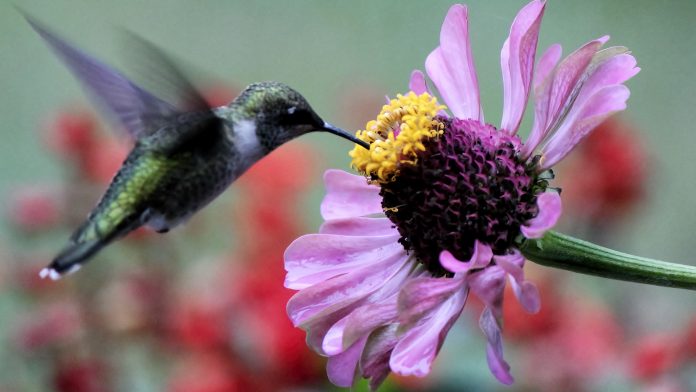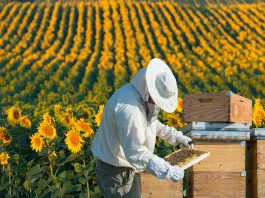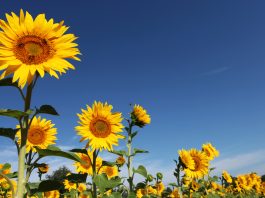A collaborative research team, including Bonn University, have observed a significantly higher seed set in hummingbird pollination compared to bees.
How was this comparison discovered?
An international team of researchers from two separate Universities: Bonn and Xi’an Jiaotong-Liverpool, Suzhou (China), studied the reproductive systems of three sister species pairs, where one species is pollinated by insects and the other by hummingbirds.
From this experiment, scientists discovered mechanisms that explained the clear switch from insect to bird pollination; the study has been published in the journal Ecology and Evolution.
What factors are important in pollination?
Distinct tactics have evolved in the pollination of flowering plants, with various factors contributing to the process, such as the regularity and effectiveness of the flower visitor. Scientists have also noted that there are major differences between the various animal groups.
Worldwide, insects, bees in particular, are the most common species associated with pollination. Bees usually have quite small activity ranges, while other pollinator groups such as hummingbirds fly much longer distances.
“It was previously assumed that plants switch their pollinator group from bees to hummingbirds when the activity and thus the pollination efficiency of bees is too low or too unpredictable, for example in the high mountains,” explained Dr Stefan Abrahamczyk of the Nees Institute for Plant Biodiversity at the University of Bonn. “For example, in cloud forests of tropical high mountains, it is often too humid or too cold for many bees.”
Why have other species become the superior pollinators?
Scientists have observed that plants in regions with high bee diversity, and abundance of them, have essentially switched to hummingbirds, bats, or even small, ground-dwelling mammals such as mice, lemurs, or honey possums.
Dr Abrahamczyk and his colleagues have demonstrated that the reasons for evolutionary switching of pollinator groups are much more complicated than previously anticipated. When two new species arise from one original species during evolution, the two newly formed species are called a ‘sister species pair.’
With this in mind, the research team analysed three different sister species pairs from distinct plant families in terms of their reproductive strategies.
In each case, one sister species is hummingbird-pollinated, and the other is bee-pollinated. All of the species emerged from bee-pollinated ancestors, and occur in areas of North America, which is characterised by high diversity and abundance of bees.
By conducting a series of pollination experiments it was discovered that all of the hummingbird-pollinated species had a significantly higher seed set, and the seeds had significantly higher germination rates when they resulted from pollination with pollen from another plant individual of the same species.
“From these results, we can conclude that hummingbird pollination evolved in populations of bee-pollinated species that are particularly dependent on cross-pollination, i.e., cannot self-pollinate,” noted Dr Abrahmamczyk.
Which is more effective regarding pollination: Bees or hummingbirds?
Because of their larger radius of activity compared to bees and their frequent movements between different plant individuals of the same species, hummingbirds can pollinate plants that do not self-pollinate as effectively as bees.
Bees often visit all open flowers on one plant before flying to the next. Therefore, bees mainly encourage self-pollination. Compared to hummingbirds, bees have another disadvantage: they groom intensively during flight and deposit the combed-out pollen in their pollen baskets to feed it to their larvae. As a result, only a small portion of the pollen reaches the stigma and can fertilise the ovules. Hummingbirds, on the other hand, are not interested in pollen.
“These newly gained insights can also be applied to the evolution of other pollination systems, such as bat or moth pollination, in terms of their frequency and efficiency,” concluded Dr Abrahamczyk.
Thus, these results provide a deeper insight into the evolution of plant-pollinator interactions and reveals that plant and pollinator characteristics must be considered when it comes to understanding the evolution of pollination systems.









